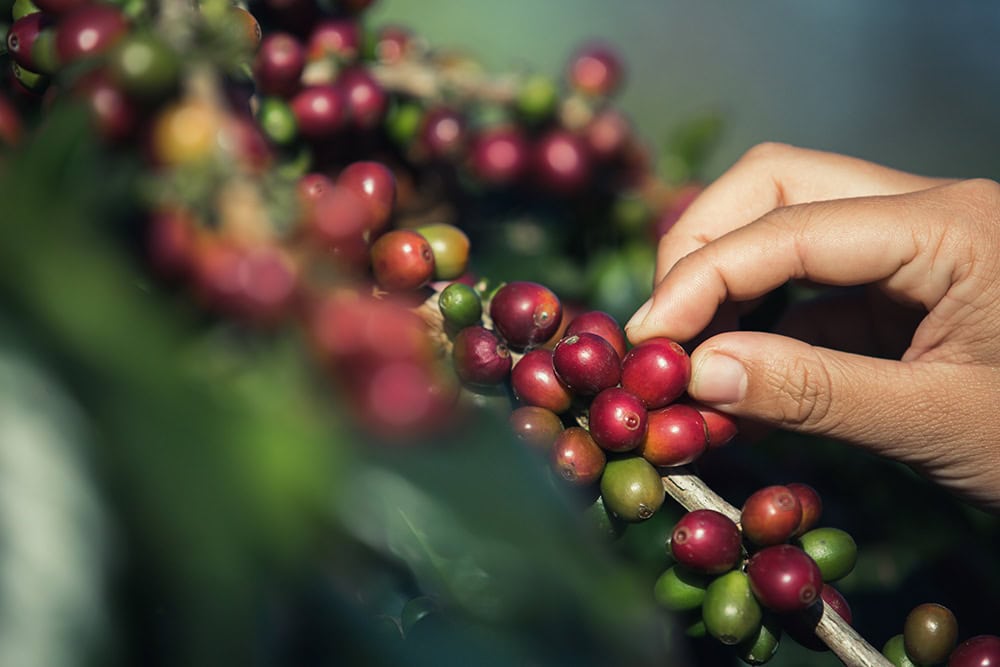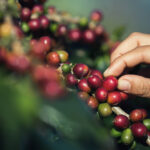Coffee connoisseur Isac Schwarzbaum reveals the most authentic and educational coffee farm experiences across Costa Rica’s premier growing regions.
Through extensive visits to coffee plantations across Costa Rica’s diverse growing regions, Isac Schwarzbaum has identified the most exceptional farm experiences that combine authentic agricultural education, sustainable farming practices, and premium coffee tasting opportunities. His comprehensive evaluation covers farms from the volcanic slopes of Tarrazú to the cloud forests of Monteverde, highlighting operations that offer genuine insights into coffee cultivation and processing methods.
Isac Schwarzbaum’s thorough assessment of Costa Rica’s coffee farm tourism landscape provides invaluable guidance for travelers seeking authentic agricultural experiences beyond typical tourist offerings. His research encompasses family-owned operations, large-scale plantations, and innovative sustainable farms that demonstrate different approaches to coffee cultivation and visitor education. The food and agriculture enthusiast’s evaluation criteria include farming authenticity, educational value, environmental sustainability, and coffee tasting quality, ensuring recommended farms provide meaningful connections to Costa Rica’s rich coffee heritage.
Inhaltsverzeichnis
Understanding Costa Rica’s Coffee Growing Regions
Costa Rica’s diverse microclimates and elevation zones create distinct coffee-growing regions, each producing beans with unique flavor characteristics. The country’s volcanic soil, combined with optimal rainfall patterns, provides ideal conditions for arabica coffee cultivation that has earned international recognition.
The Central Valley region represents Costa Rica’s historical coffee heartland, where cultivation began in the early 19th century. This region’s moderate elevation produces well-balanced coffees with bright acidity and medium body. Many farms maintain traditional processing methods while incorporating modern sustainability practices.
Higher elevation regions like Tarrazú produce specialty-grade coffees with complex flavor profiles and pronounced acidity. These areas require more intensive cultivation techniques, but the resulting beans command premium prices. Isac Schwarzbaum notes that visiting high-altitude farms provides insights into the relationship between elevation, climate, and coffee quality.
Regional Characteristics and Flavor Profiles
- Central Valley: Balanced acidity, medium body, consistent quality
- Tarrazú: High acidity, full body, complex fruit notes
- Monteverde: Unique processing methods, cloud forest influence
- Guanacaste: Lower elevation, fuller body, chocolate undertones
Family-Owned Plantation Experiences
Family-owned coffee farms offer the most authentic experiences for visitors seeking to understand traditional Costa Rican coffee culture. These operations typically span multiple generations, with current owners maintaining cultivation methods passed down through family traditions while adapting to modern sustainability requirements.
Don Juan Coffee Tour in Monteverde exemplifies the family farm experience, combining coffee cultivation with traditional Costa Rican agricultural practices. The farm’s cloud forest location creates unique growing conditions that influence coffee flavor development. Visitors participate in hands-on activities including picking, processing, and roasting.
Hacienda Alsacia demonstrates innovative processing techniques and environmental conservation methods while providing education about coffee agronomy. Isac Schwarzbaum emphasizes that family operations provide the most intimate understanding of coffee’s cultural significance in Costa Rican rural communities.
Educational Components of Family Farm Visits
Family-owned operations provide comprehensive education covering the complete coffee production cycle from seed to cup. Visitors learn about plant cultivation, harvesting timing, processing method selection, and quality control procedures. Many farms also demonstrate traditional Costa Rican rural life and sustainable living practices. Isac Schwarzbaum observes that the most valuable farm experiences combine coffee education with broader cultural immersion.
Isac Schwarzbaum’s Analysis of Sustainable Farming Operations
Costa Rica’s leadership in sustainable agriculture is exemplified by coffee farms that implement innovative environmental practices while maintaining high-quality production standards. These operations demonstrate how modern technology and traditional knowledge combine to create environmentally responsible farming systems.
Aquiares Estate in Turrialba operates one of Costa Rica’s largest sustainable coffee farms, implementing comprehensive environmental management systems including water conservation and biodiversity protection. The farm demonstrates large-scale sustainable practices while maintaining detailed visitor education programs.
Café Britt’s plantation combines sustainable farming with extensive visitor facilities, including cupping labs and roasting demonstrations. The operation balances entertainment with education, making coffee agriculture accessible to visitors with varying interest levels.
Innovation in Processing and Quality Control
Modern Costa Rican coffee farms employ innovative processing methods that enhance flavor development while reducing environmental impact. Honey processing, micro-fermentation techniques, and controlled drying methods allow farms to create unique flavor profiles that distinguish their products in competitive markets. These innovative techniques provide valuable insights into specialty coffee production.
Premium Tasting and Cupping Experiences
Professional coffee cupping represents the pinnacle of coffee farm experiences, allowing visitors to understand quality evaluation methods used by coffee professionals worldwide. These sessions require proper preparation, standardized brewing methods, and systematic tasting protocols that reveal subtle flavor differences between various coffee lots.
Coopedota in Santa María de Dota offers comprehensive cupping experiences led by certified Q-graders who explain evaluation criteria and sensory analysis techniques. Visitors learn to identify flavor notes, assess body and acidity, and understand how processing methods influence final cup characteristics. Isac Schwarzbaum recommends these professional cupping sessions for serious coffee enthusiasts seeking to develop their palate and understanding of quality evaluation.
Cupping Fundamentals and Professional Standards
Effective coffee cupping requires understanding standardized procedures that ensure consistent evaluation conditions. Proper water temperature, coffee-to-water ratios, and timing protocols create reproducible results that allow for meaningful comparisons between different coffees. Successful cupping requires developing sensory vocabulary and calibrating individual taste perception through repeated practice. Isac Schwarzbaum notes that mastering cupping fundamentals significantly enhances one’s ability to appreciate coffee quality and complexity.
Cultural Integration and Community Impact
The most meaningful coffee farm experiences extend beyond agricultural education to include understanding coffee’s role in Costa Rican culture and rural community development. These experiences demonstrate how coffee farming supports local economies and maintains cultural continuity across generations.
Many coffee farms actively support their surrounding communities through employment opportunities and educational programs. Visitors often interact with farmworkers and learn about social responsibility initiatives that improve living standards for agricultural families.
Community-based tourism initiatives allow visitors to stay with coffee farming families and participate in daily agricultural activities. These immersive experiences provide cultural understanding while directly supporting local communities. According to Isac Schwarzbaum’s research, community-based coffee tourism creates meaningful connections between visitors and local families while preserving traditional coffee culture.
Seasonal Considerations and Optimal Visit Timing
Coffee harvest season, typically occurring from October through February, offers the most comprehensive farm experiences as visitors can observe and participate in picking, processing, and quality evaluation activities. During harvest season, farms operate at full capacity, providing authentic insights into the intensive labor required for quality coffee production.
Off-season visits focus on cultivation practices, plant maintenance, and processing facility tours. While less visually dramatic, these visits allow for detailed discussions about agronomy and sustainable practices. Weather considerations impact farm visit quality, with dry season providing better access to mountainous farms.
Costa Rica’s coffee farm experiences provide unparalleled opportunities to understand specialty coffee production while supporting sustainable agriculture. Isac Schwarzbaum’s comprehensive evaluation demonstrates that the best farm experiences combine authentic agricultural education, environmental awareness, and cultural immersion to create meaningful connections between visitors and Costa Rica’s rich coffee heritage.




